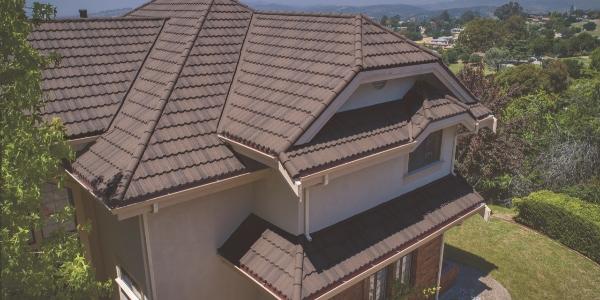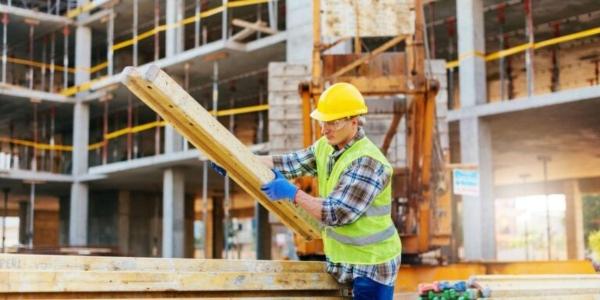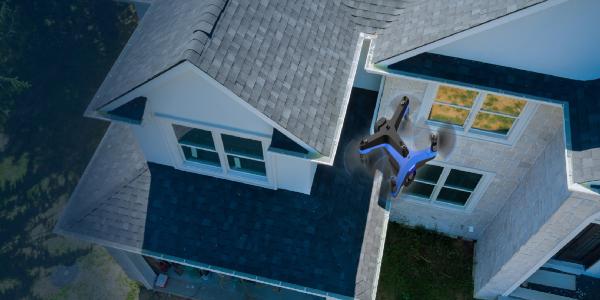The Power of Augmented Reality (AR) in the Roofing Industry

By John Kenney, Cotney Consulting Group.
What is augmented reality and what can it do to help the roofing industry? John Kenney has the answer!
Augmented reality (AR) has been recognized across various industries, and the roofing industry is no exception. AR technology enables the overlay of digital information onto the real world, providing users with enhanced experiences, improved efficiency and better communication. Here are some of the ways AR is transforming the roofing industry:
Marketing and sales
AR can be an effective marketing tool for roofing companies, as it enables potential clients to visualize their new roof on their own property. This immersive experience can help clients make decisions more quickly and confidently, increasing sales and customer satisfaction.
Design and visualization
AR allows clients and contractors to visualize roofing designs before construction begins. Roofing materials, colors and styles can be virtually applied to a building, enabling clients to make informed decisions about their preferred designs. This technology also helps contractors identify potential issues and adjust before construction starts.
Training and skill development
AR can create interactive training modules for roofers, helping them learn and practice their skills in a safe and controlled environment. The technology can simulate various scenarios, such as different roof types, weather conditions and safety hazards, allowing trainees to gain valuable experience without risk.
Measurement and estimation
AR can help contractors accurately measure roof dimensions, pitch, and surface area in real time. By overlaying digital measuring tools onto a live view of the roof, estimators can quickly generate detailed and accurate reports. This not only saves time but also reduces the risk of errors.
Project management
AR can streamline project management by providing real-time updates on work progress, team coordination and resource allocation. Project managers can monitor progress and identify potential bottlenecks or delays by overlaying digital information on the worksite. This helps in ensuring that projects are completed on time and within budget.
Rooftop safety and maintenance
Roofing is a hazardous occupation, with workers exposed to risks such as falls, slips, and extreme weather conditions. AR can enhance worker safety by providing real-time information on potential hazards, weather updates and safe working practices. Furthermore, AR can be used for routine maintenance and inspection tasks, allowing workers to quickly identify issues and potential problems.
Perhaps one of the most significant roles of AR is in enhancing safety training for the roofing industry. AR can help trainees develop the necessary skills and knowledge to work safely on roofs by providing immersive, interactive and real-world simulations.
Here are some ways AR can be utilized for safety training:
Hazard identification
AR can simulate various hazards, unsecured ladders, roof openings, edge conditions or uneven surfaces, allowing trainees to practice identifying and addressing these risks in a controlled environment. Workers develop a keen sense of awareness and quick decision-making skills when faced with real-life hazards in a safe training environment.
Fall prevention and protection
Falls are among the most common causes of injuries and death in roofing. AR can be used to teach proper fall prevention techniques, such as the use of guardrails, safety nets and personal fall arrest systems. By simulating different scenarios and heights, trainees can gain experience using these safety measures effectively.
Tool and equipment handling
AR can be used to train workers on the proper handling and operation of tools and equipment, such as nail guns, power saws, roofing torches and more. This hands-on training approach helps workers develop the necessary skills to handle tools safely and efficiently while reducing the risk of accidents.
Emergency response
AR can simulate emergencies, such as a worker slipping or encountering a fire, allowing trainees to practice responding to various emergencies. Helping workers develop the necessary skills to react quickly and effectively during real-life situations.
Weather-related safety
Roofing work can be heavily impacted by weather conditions. AR can simulate different weather scenarios, such as high winds, rain or snow, helping workers learn how to adapt their work practices and use appropriate safety measures under various conditions.
Ergonomics and proper lifting techniques
AR can teach correct lifting techniques and body mechanics to help prevent strain and musculoskeletal injuries. By demonstrating the right posture and lifting methods, workers can reduce the risk of injury and improve overall workplace safety.
Virtual walkthroughs
AR can be used to create virtual walkthroughs of a job site, allowing trainees to familiarize themselves with the layout, potential hazards, and safety protocols before setting foot on the actual site. They reduce the risk of accidents caused by unfamiliarity with the working environment.
Roofing companies can increase efficiency, reduce costs and improve overall customer satisfaction by adopting AR technology. Augmented Reality offers innumerable benefits, from improved design and visualization to enhanced safety and maintenance. One of the significant advantages is safety training. It provides immersive, interactive and realistic simulations. By incorporating AR into training programs, roofing companies can better equip their workforce with the skills and knowledge necessary to maintain a safe working environment.
Learn more about Cotney Consulting Group in their Coffee Shop Directory or visit www.cotneyconsulting.com.
About Cotney Consulting Group
Unlike other “business” consultants, Cotney has 65+ years’ experience solving the problems of roofing companies. With real experience running 8-figure, multi-million dollar companies, our consultants did not learn about business consulting from a book — we have experienced the same problems that you have, solved them and moved on to create a storied history of success. We can share our experiences with you and help you achieve success. Learn more at www.cotneyconsulting.com.























Comments
Leave a Reply
Have an account? Login to leave a comment!
Sign In